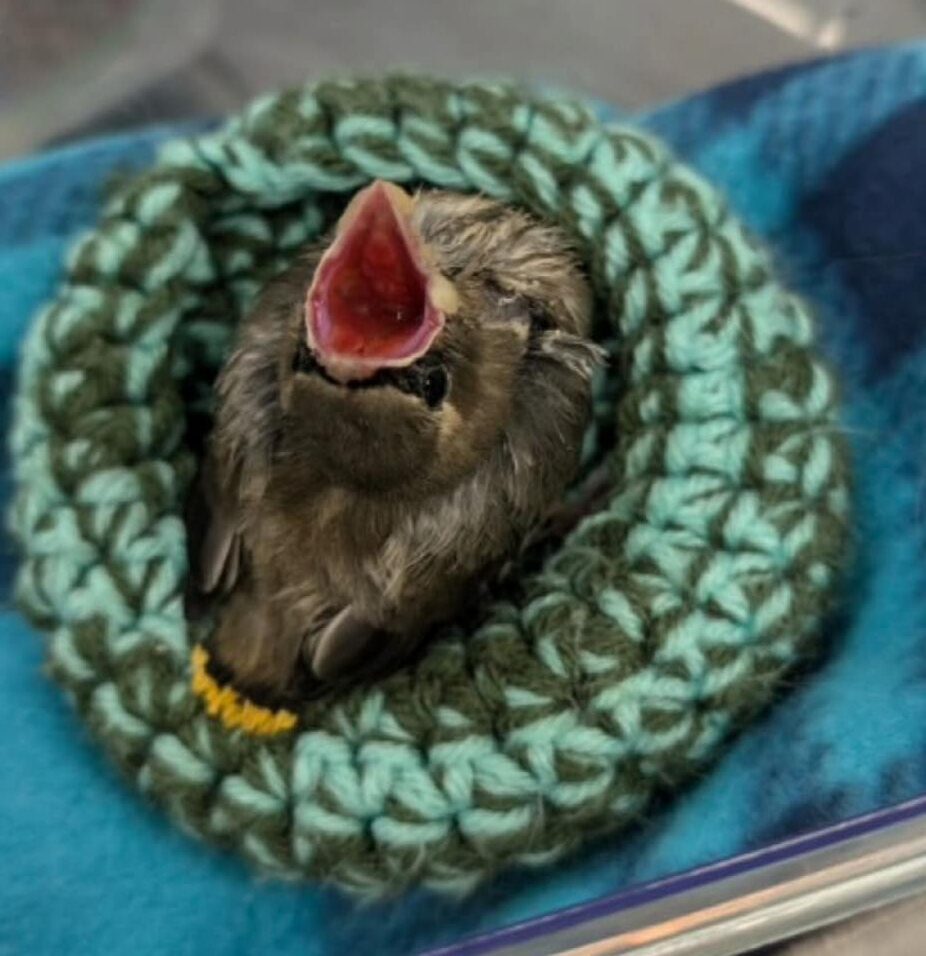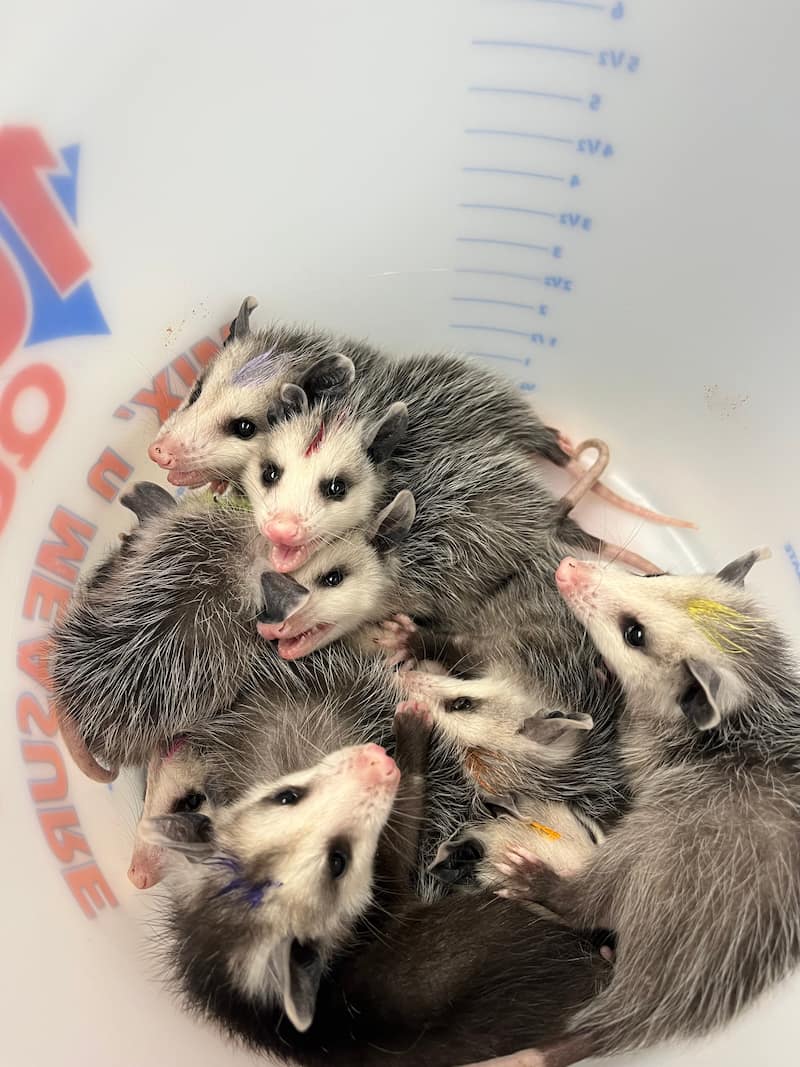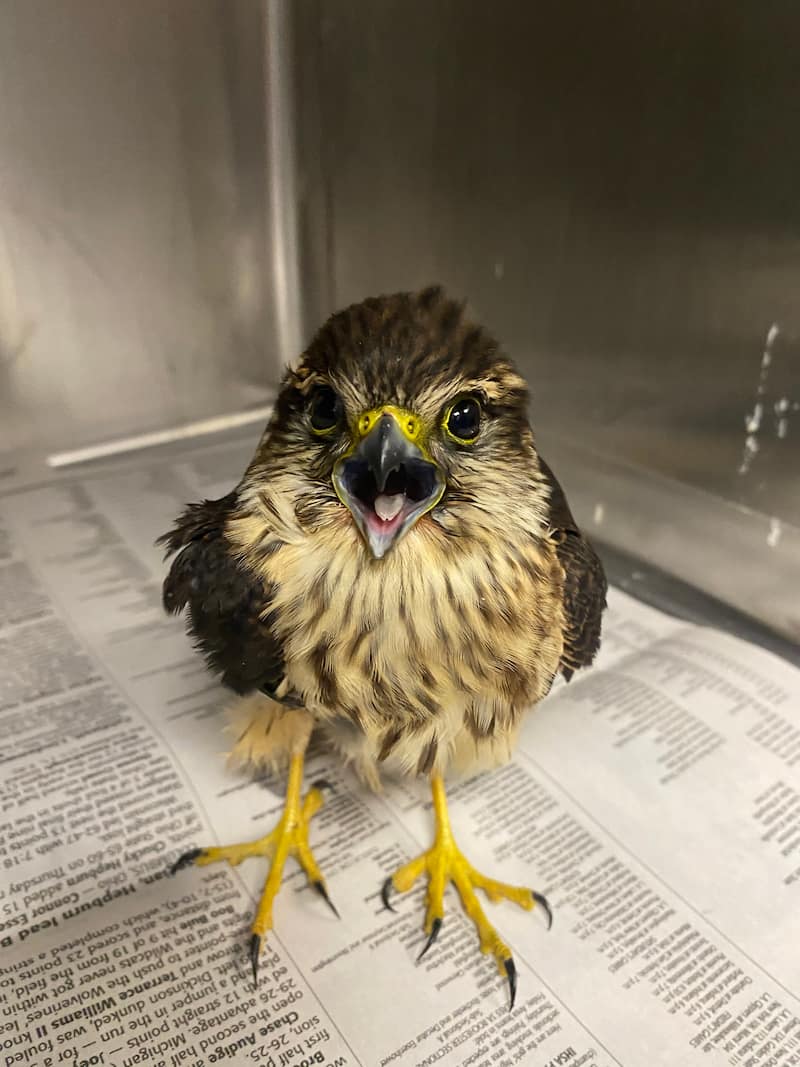![[Ruby the Red-tailed Hawk poses outside]](https://vetmed.illinois.edu/wp-content/uploads/2021/06/ruby-main.jpg) By Mary Kate Feldner, University of Illinois veterinary student
By Mary Kate Feldner, University of Illinois veterinary student
We are proud to officially announce the addition of Ruby, a red-tailed hawk, to the resident ambassador team at the Wildlife Medical Clinic!
A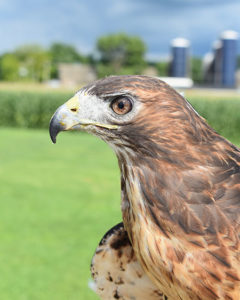 fter months of training, Ruby joins Odin, our 23-year-old red-tailed hawk, to become the second red-tailed hawk in our ambassador program.
fter months of training, Ruby joins Odin, our 23-year-old red-tailed hawk, to become the second red-tailed hawk in our ambassador program.
To learn more about Ruby, we sat down with the three dedicated student volunteers who have been working tirelessly with our new hawk on the temperament testing and training required of ambassador animals. Allison Wright and Jess Bertulis, both third-year veterinary students, and Sam Barratt, a second-year student, answered questions about the newest resident ambassador.
How did Ruby find her way to the Wildlife Medical Clinic?
Ruby was found in central Illinois approaching humans for food. A good Samaritan noted that her behavior was unusual for a wild hawk—and not particularly safe for Ruby or any humans that she approached. With that in mind, they brought her to Illinois Raptor Center (IRC), a wildlife rehabilitation facility located in Decatur, Ill. The IRC evaluated Ruby and determined that she was unfit for release into the wild due to her demeanor, but noted that she could serve well as an ambassador animal. We often collaborate with the IRC on cases, and they approached us about her care. While our goal at the Wildlife Medical Clinic is to return wild animals back to their original habitat, we agreed that Ruby’s behavior would not help her be successful in the wild and instead she would find her forever home with us!
What interested the resident ambassador program in taking on Ruby as a member of the team?
We’ve been looking to add another bird to our program for the past several months, but the process of finding an appropriate animal is often lengthy. Wild animals, even if previously habituated, are all still individuals, and not every animal will fit with an existing program. When our directors first met Ruby, they knew her intelligent, inquisitive nature would complement our program’s objectives well, while also making her unique from our existing birds.
What kind of training and preparation goes into adding another animal to the resident ambassador program?
All of our ambassador animals are trained to complete commands through means of positive reinforcement. This method rewards them for listening to us while still giving them space and respect on days when they are uncomfortable or disinterested. Integrating a new animal requires a step-by-step process of teaching them to understand verbal cues and hand commands.
On the office side of things, the Wildlife Medical Clinic has to file paperwork with several government agencies to gain approval for possession of a wild animal. All native bird species are protected under the Migratory Bird Act, so you need special permission to house one.
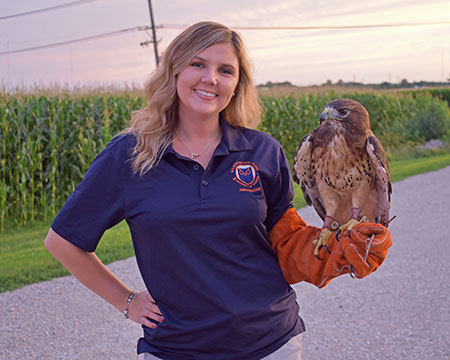 What has been the most rewarding part of working with Ruby?
What has been the most rewarding part of working with Ruby?
Ruby amazes me every day. She’s a remarkably intelligent bird, and it’s extremely rewarding to watch her learn new things almost daily. I think all three of us are so proud of how far she’s come: from slightly nervous with her new surroundings at the beginning, all the way to performing chained commands like they’re nothing. Most animals don’t pick up things as quickly as she does.
On the other hand, what has been the most difficult part of preparing Ruby to join the resident ambassador team?
We’ve actually overcome most of our training speedbumps relatively quickly. I think the most difficult part of this journey, at least for me, has been preparing myself for knowing that I’ll be unable to work with her as consistently once I begin my fourth-year clinical rotations. However, I know she’s going to be a great ambassador for the program for many, many years to come!
What kind of future training will Ruby undergo as part of the resident ambassador program?
Now that she knows all of the basic commands, we’ll continue to shape her behaviors and build upon them. We’ve always adjusted our training over the years to accommodate changes to the program, and she’ll also need to learn how to perform her existing behaviors in our new ambassador residence once construction is completed.
Follow us on Facebook for updates on the construction of our new ambassador residence. You can also learn more about our ambassador animal program or schedule an educational event with our ambassadors.

